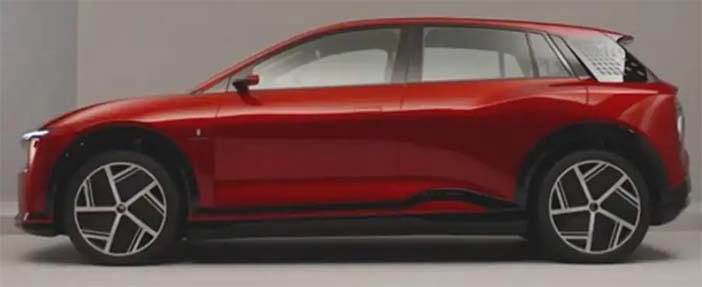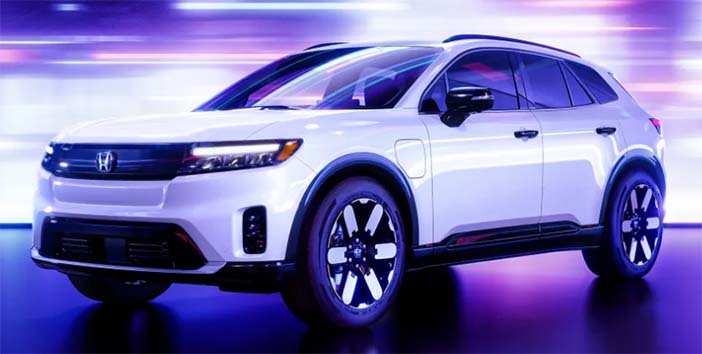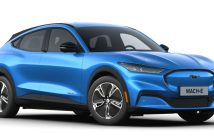+++ No fully electric BUGATTI will be released this decade, despite owner Mate Rimac planning to launch hybrid and electric hypercars before 2030. “At the moment, we’re looking at the next step for the hybrid model; everything else is a little too far down the line”, Bugatti’s design director Achim Anscheidt said, with this hybrid supercar earmarked to arrive in 2027. “It would be almost irresponsible towards our cherished customer base to look beyond the next car”. Last year, Rimac stated that “within this decade, there will be fully electric Bugattis”. However, this prediction now seems unlikely. When asked if Bugatti’s first EV had been pushed back beyond 2030, deputy design director Frank Heyl stopped short of confirming this, adding that the team was focused on “this decade, with the hybrid”. When an electric Bugatti does finally arrive, however, it will “blow people out of the water”, added Heyl. What form this electric car may take is also up for debate. Rimac previously told he wants to expand beyond the one-core-model strategy, something that has been in place since the EB110 was launched in 1991, and produced products “that are not only hypercars”. He added they will be “very exciting” and “different”, with hybrid and fully electric powertrains available across the portfolio. An SUV, however, is one that won’t be coming soon for the brand. Last month, Autointernationaal.nl revealed that plans for an electric Lamborghini Urus rival had been shelved by Bugatti in favour of focusing on “more exclusive” cars. Design director Achim Anscheidt said Bugatti was concerned that such a move could sell out its brand and make it a less exclusive manufacturer than it currently is; something that it treasures. The recently announced Bugatti Mistral roadster, the last car to be powered by the company’s unique W16 engine, will be limited to just 99 examples. +++
+++ Electric vehicle buyers usually have ecological and economical motives when purchasing a new car, though not everyone wants a locally zero-emissions machine just to go green or save money. Many customers are thrilled by the performance those cars offer and in fact, according to FORD , the larger portion of the potential EV consumers would switch to electric power not because of environmental motivation, but because they want the performance that comes with it. If you take a look at the company’s EV portfolio in the United States, you won’t find a small, affordable, and efficient electric vehicle in the same category as the Nissan Leaf, for example. The situation is the same in Europe, though the Old continent will soon receive a Ford-badged electric vehicle based on a Volkswagen platform, as well as an all-electric Puma crossover. In America, the Mustang Mach-E and F-150 Lightning, both very powerful and not quite efficient, are Ford’s EV best-sellers. So, what’s the automaker’s answer to the needs of the US market? Only “insanely great” electric vehicles even if they are not as ecological as they could potentially be. “We use that all the time in meetings, ‘if it’s like today but a bit better, cancel it’, We’re not going to make that, it’s not the winning formula. The winning formula for Ford is picking the segments our customers love and then figuring out how to make them insanely great, to do things they’ve never done before”, Darren Palmer, vice president of electric vehicle programmes for the Ford Model E division, explained in a recent interview. Or, if we have to translate the marketing language, Ford wants to make electric vehicles that people want to buy because of their design, performance, and technology. If this strategy sounds familiar, it’s probably because automakers such as Porsche and Polestar are following a very similar path. “There are other reasons for people to have them that are logical, but the most important thing is ‘you’ve got to have it’ ”, Palmer also explained. Does the customer even care about going green? Not so much, Ford believes, as Emma Bergg, director of communications for Ford’s electric vehicle programmes, told the clients don’t really “care about the end-to-end story”. Ultimately, Ford wants to give them “something they’ve never had before”. +++
+++ FOXTRON , the automotive division of Taiwanese electronics giant Foxconn, has previewed a new electric hatchback called the Model B ahead of a full unveiling on 18 October. Styled by Pininfarina, the Volkswagen ID 3-sized Model B is the third electric passenger car to be revealed by Foxtron, following the Model C and Model E unveiled in 2021. Founded in 2020 as a joint venture between electronics contract manufacturer Foxconn and Taiwanese car maker Yulon, Foxtron has also revealed an electric bus called the Model T and a pick-up known as the Model V. The Model V will make its public debut alongside the Model B at Foxconn’s Technology Day on 18 October. Foxtron confirms the Model B is based on its open-source MiH electric car platform, which also underpins the Model C and Model E. No details have been revealed about the new model’s drivetrain, although officials suggest it has been engineered to accept both single-motor and dual-motor four-wheel-drive set-ups. Although billed as a concept, the Model B is expected to make it to production relatively unchanged in 2024 as part of an extended Foxtron line-up, including production versions of both the Model C SUV and Model E saloon. Foxconn CEO Yang-Wei Liu has confirmed that the development of the Model E is nearing completion, with production of the new saloon due to begin during the second quarter of 2023. Along with production activities scheduled to take place in Taipei, Taiwan, from 2023, Foxtron says it will begin building cars at a factory in Ohio, US, in 2024. Yang-Wei Liu told journalists in August the US plant is designed for annual capacities of up to 500.000 cars. In a move mirroring the contract manufacturing activities of parent company Foxconn, which produces the Apple iPhone, Foxtron plans to offer manufacturing expertise to third-party companies. The Taiwanese company has already signed a manufacturing agreement to produce Fisker’s second planned electric passenger car, which goes under the working title Pear. +++

+++ FRANCE has an established reputation for being rather strict when it comes to speeding. In 2018, the country implemented privately operated speed camera cars driven not by law enforcement, but by outsourced individuals. Their use has spread since then, and in 2021 these anonymous cars caught more than half a million speeding motorists in France. Catching that many speeders require many more motorists to be monitored. According to The Connexion, 6.65 million vehicles underwent speed checks, resulting in over 500.000 fines totalling €76 million for 2021. That’s a hefty number, but it’s just 10 percent of the total fines issued for high-speed driving offenses in the country last year. The actual cars are still government property, but the drivers are employed by a private company and as such, they don’t pull people over. Cameras and infrared tech are used to monitor traffic while the driver travels a predetermined route. The system does all the work, “flashing” a car that is speeding and logging the info for the fine. There’s no indication when vehicles are flashed or cited, and no information is given to the camera car driver. In this case, the person behind the wheel is essentially just driving an unmarked, anonymous speed camera. Private companies stepping into the realm of law enforcement has long been a controversial subject, especially when money is involved. In this instance, The Connexion explains that drivers and companies are not paid based on citations issued, but on miles travelled and there is a specific limit. Each driver has a route to follow, and they are required to maintain normal speeds during their shift. In theory, this discourages baiting other motorists to speed by slowing down. Camera car drivers can get a hefty fine of their own if caught deliberately speeding up or slowing down to futz with other motorists. The camera cars are also limited to a maximum of €194,000 in fines per car in 1 year. However, 450 are presently in use throughout the country, which means the French government allows up to €87.3 million in annual speeding fines to be generated by private companies. +++
+++ HONDA said on Thursday it would reduce car output by up to 40% at 2 Japanese plants for the rest of October from its earlier plans, as the company battles with persistent supply chain and logistical problems. 2 lines at Honda’s Suzuka plant in western Japan will cut production by about 20% in October, while its assembly plant in Saitama prefecture, north of Tokyo, will lower production plans by about 40% for the month. The automaker said last month it would cut vehicle production at Suzuka by 40% and Saitama by 30% in early October. Honda blamed delays in receiving parts and logistics on Covid-19 outbreaks and semiconductor shortages. The output reduction will affect vehicles including the HR-V and Civic. Honda’s production at the 2 plants returned to normal for June after an earlier reduction but it began making adjustments again for July. Honda’s rival Toyota last week lowered its October production target by 6.3% to about 750.000 vehicles because of a shortage of semiconductors. That announcement came about a week after it had lowered the production target for that month to around 800.000, about 100.000 short of its average monthly production plan. +++
+++ The HONDA PROLOGUE is getting closer and closer to production, but today marks a big step in that process with Honda revealing the full exterior and interior design for us. Don’t get too excited about powertrain and vital specs, though, as today is largely about design. Honda is showing off a new design language that it calls “Neo-Rugged,” as it’s meant to look both tech-forward but ready for anything at the same time. The photos you see here are of a top trim model finished in North Shore Pearl, a color that Honda says will be exclusive to the Prologue. It features things like a panoramic moonroof, 21 inch wheels and a new spelled out “Honda” badge for the rear. Honda tells us the front fascia is inspired by that of the cute Honda e, and while we see the inspiration in there, the big SUV said fascia is attached to is nothing like that of the Honda e. The interior looks familiar to us when it comes to Hondas, as it features a freestanding 11.3-inch touchscreen running Honda’s infotainment software, a bunch of buttons and knobs and a general simplicity about it. Its 11 inch instrument cluster is fully digital and while it also protrudes above the dash, it’s neatly integrated and tucked into it and looks cohesive with the overall design. Honda didn’t show off backseat space in its photos, but it claims the Prologue will feature ample space for both passengers and cargo. In the realm of specs, Honda is providing some key measurements, such as a 121.8 inch wheelbase. Those who paid close attention to the Chevrolet Blazer EV’s spec sheet will see that the Prologue is identical, indicating that the Blazer EV’s platform is the one Honda is borrowing for its electric SUV. That wheelbase is also 8 inches longer than the new CR-V, and it’s also wider than the CR-V by 5 inches. Lastly, Honda tells us that it’s planning a unique transition program for those interested in Prologue now. Since it won’t be on sale until 2024. +++

+++ PORSCHE took pole position as Europe’s most valuable automaker on Thursday, overtaking former parent Volkswagen as the price of the sport scar maker’s newly-listed shares sped higher. Although Porsche shares had fallen below its listing price on Monday to 81 euros, in line with a wider fall in markets, they had risen to 93 euros , giving the sports car brand a market valuation of 85 billion euros. Porsche’s share price regained momentum after investment banks involved in its flotation had purchased almost 3.8 million shares for 312.8 million euros as part of the so-called greenshoe option, designed to support a listing. The rise pushes Porsche’s valuation beyond Volkswagen’s 77.7 billion euros. Mercedes-Benz comes in third among European carmakers with a 57.2 billion euro valuation, followed by with 47.5 billion euros and Stellantis with 39.7 billion. “Inflation data from Europe and the United States, recent worries over energy supply in Europe and the escalation of the war in Ukraine last Thursday led to fluctuations which made small-scale stabilization measures necessary”, a spokesperson for Volkswagen said. The shares purchased between September 29. and October 4. represented around 11% of the total trading volume since the listing, the spokesperson added, consisting of around 34 million shares. Overall, up to 14.85 million shares worth 1.2 billion euros are available via the greenshoe option in the four weeks after the offering as a stabilization measure. +++
+++ TOYOTA said it would restart production of its first electric vehicle, the BZ4X, on Thursday after fixing potential safety problems that had halted sales of the new battery-powered model for more than three months, and even prompted buybacks. Japan’s largest automaker, a laggard in the EV market, recalled 2.700 BZ4X cars globally in June after discovering that there was a risk the car’s wheels could come loose. Subaru, a fifth owned by Toyota, also had to recall units of the related Solterra model that it jointly developed with Toyota. A recall notice submitted to Japan’s transport ministry by Toyota in June said that sharp turns and sudden braking could cause a hub bolt to loosen, raising the risk of a wheel coming off the vehicle. The automaker on Thursday said in a filing to the ministry that it would make sure hub bolts were replaced and properly tightened in new versions of the BZ4X. In addition, Toyota said it had identified and fixed a potential problem with airbags in the car. Some airbags had been improperly installed at the factory and were at risk to fail or cause injury because of the placement of a strap inside the airbag assembly. Toyota had not previously disclosed that problem. Masahiko Maeda, Toyota’s chief technology officer, told a briefing the automaker only became aware of the airbag issue in the last month or two. “We apologize again for the concern, anxiety, and inconvenience we have caused to our customers, our dealers and our stakeholders”, Maeda said. He declined to comment on how much the recall had cost. Toyota has faced criticism from environmental groups and investors who want the company to expand faster into battery EVs. Toyota has pushed back, saying it needs to offer car choices to suit different markets and customers. Hybrids such as the Prius remain far more popular in Toyota’s home market. Pure battery-electric vehicles accounted for just 1% of the passenger cars sold in Japan last year, according to industry data. The BZ4X is available for lease only in Japan; a service which will resume on October 26, Maeda said. He did not specify when American sales would recommence. Only 232 units of crossover, pitched as Toyota’s answer to Tesla’s Model Y and the Volkswagen’s ID.4, have been sold this year in the United States. Last year, the Japanese automaker committed about $30 billion to develop battery electric vehicles. It expects the company’s annual sales of such cars to reach only 3.5 million vehicles by the end of the decade, about one-third of current annual sales of its gasoline-powered cars. +++


